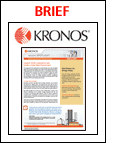I want FREE sustainable ENERGY... Can you give me?
Wednesday, December 22, 2010
No matter where we are or we work, either in an office, refinery plant or any building, we need it. What is it that is so important to us and our work? The second most important utility after water is for me the electricity.
I still remember the chaos in my plant when suddenly my plant which was operating smoothly suddenly black out. Yeah…the power supply from the power station and also the power grid was disrupted. The supervisor, shift leader and operators rushed to switch of the pumps and close valves in our 8 storey refinery. It’s not easy to handle a sudden power failure such as that for a huge plant. Imagine the lost resulted from the power failure. It’s tremendously huge. Then the funny thing is after 5 minutes, the power resumed. It’s not a joke!!! Although the power failure took 5 minutes, but it took more than 8 hours to stabilize the plant and get the product  within specification.
within specification.
So, who is responsible for such lost? Who will bear the cost?
If I’m running a business, company or factory, I’ll have to swallow the lost which is not even my fault. But that is the reality. What can we do?
If we install a generator or uninterrupted power supply (UPS) system, it can’t cope with the huge power demand of the plant. There is need to outsource for an energy that can back up the present power supply.
For a smaller scale, let say a house, a short power failure would not be such a hassle. The worse you can experience is a total darkness if it happen at night and the hot atmosphere you will face because you cannot switch on your fan or aircond. Or you will be attack by mosquito because you cannot switch on the mosquito repellent.
For several years I have thought of learning about alternative energy to replace the costly electricity and also the fuel to run my cars. Recently I have purchased several information product about solar installation – DIY at home. I have also thought of using the waste cooking oil from my kitchen to prepare biodiesel. However, I’ve not done both yet. I am compressed with tones of work around me from all angle… haha….
The funny thing is, 3 or 4 days after I purchase the ebook on making my own solar at home, I stumbled upon the idea of retrieving free energy from the air. The energy is actually obtained from the invisible wavelength that is abundantly available around us.
I make a swift research to investigate the potential of this free energy. I found out that the free energy systems can provide electricity from energy sources around us. Once we install the free energy devices, interestingly, we won’t have to pay monthly electricity bills ever again! This has triggered me to explore this energy a little bit further.
Free energy products work on different principles, developed by free energy specialists all over the world. Out of a wide variety of techniques, some free energy methods have been found to be more effective and dependable. One of these techniques involve the generation of electricity from TV and radio waves around us. Another involves the production of electricity from electrostatic charges in the atmosphere. Yet another method focuses on the conversion of radiant energy ever present in the atmosphere to electrical energy.
Whatever the technique used, free energy systems are reliable and easy to set up. The installation process is so simple that you can easily do it yourself, without the help of any professional electrician. To set up a free energy system for your home, you would need a few auxiliary devices such as a charge controller, a battery, and an inverter. You could also use a system meter between the battery and the inverter, to determine how much electric charge is left in the battery.
The free energy device is connected to a charge controller for regulation of electric charge from the device. The charge controller is then connected to a battery for storage of energy produced by the free energy system. Batteries tend to work better in warm temperatures, so it might be a good idea to encase the battery in a battery box. The battery box also helps you keep things clean and organised.
the device. The charge controller is then connected to a battery for storage of energy produced by the free energy system. Batteries tend to work better in warm temperatures, so it might be a good idea to encase the battery in a battery box. The battery box also helps you keep things clean and organised.
The battery, with or without the battery box, is then connected to an inverter. Once done, the output of the inverter can be connected to the mains of your house. That is all the set up required for a free energy device. Once done, you can say good bye, and happily too, to your electricity bills!
If you are interested to learn more about this free energy and the person who develop it 100 years ago, you can download a 25 page FREE ENERGY report. You need to fill up your name and email address and the report will be delivered to you straight away. This report will provide an overview of the energy or preliminary information on understanding the concept.
Labels: Biofuel, Biotechnology, Chemical Engineer, Chemical Engineering, Environmental, Equipments, Experience, green, infrastructure, Learning Curve, Problem, Solar, Technology
posted by Kipas Repair JB @ 7:50 PM,
,
![]()
10 Essential Components For a Safer Working Environment
Monday, December 13, 2010
No matter where you are or work, safety is crucially an important issue that cannot be ignored. I have experienced a number of accidents throughout my years as an engineer and that's why I must emphasize this seriously. Luckily the accidents I was involved in were not fatal. On top of my personal accidents, I also witness some fatal accidents and also near death incidents.
That is why every time before commencing a job/project or event a shift, it is important to conduct safety briefing. It doesn't matter if it is a short meeting or a casual one (normally in between shift in a plant). For huge project, a more intense
 meeting / documentation such as Job Safety Analysis (JSA), Method of Statement (MOS) plus filling up permit to work (PTW) and hot work /cold work permit is imperative. As an engineer, it is our duty to ensure the safety of the entire project or area under our responsibility. Safety involves our manpower, equipment and so on.
meeting / documentation such as Job Safety Analysis (JSA), Method of Statement (MOS) plus filling up permit to work (PTW) and hot work /cold work permit is imperative. As an engineer, it is our duty to ensure the safety of the entire project or area under our responsibility. Safety involves our manpower, equipment and so on.So, what and how do we create a safety working environment? To answer that question, I consulted with Mr. Mitchell, an experienced guy who specializes in workplace behavioral change through performance management.
According to him, a safe working environment is a condition or state, it is not necessarily an event like an incident of an accident. This means that the low number of incidents or accidents doesn't mean that the workplace is particularly safe. What really counts is the process of safety because it is an integral part of every day activities in the workplace. There are a number of activities which are clear indicators of a safe working environment and this article lists 10 of them.
- Daily safety briefings. Every morning at the beginning of the work day or the shift, the leader holds an interactive safety briefing with his or her team. It lasts less than 10 minutes and has contributions from the team members.
- Weekly inspections to identify unsafe conditions. Every staff member participates in turn and conducts a regular safety inspection where they look for hazards and unsafe conditions. This can occur weekly or twice a week.
- Weekly inspections to identify unsafe behavior. Each week two staff members carry out a regular inspection where they are identifying unsafe behavior. The objective is to identify the unsafe behavior and mention it at the next daily safety briefing. Of course no names are mentioned.
- Accident and incident investigation. Every accident or near accident is investigated with the sole objective of prevention in the future. The process of investigation is not a witch hunt to apportion blame
- Constant improvement. During the daily safety briefings, the group members have an opportunity to recommend and discuss improvements to the workplace and the processes that are carried out within it
- Reporting near hits. Every single near hit (this is an incident where no damage or injury occurs) is investigated and prevention measures are put in place so it will not happen again.
- Positive reinforcement. Each day the leader goes into the workplace and gives positive reinforcement to those members of staff for working safely. This encouragement and enthusiasm for safety is a great motivator for safe working practices.
- Blame. It is noticeable that all safe working environments do not use blame or punishment as tools for creating safe behavior. Instead, they use positive reinforcement, encouragement and recognition.
- Practical on-the-job training. Group members are continually receiving on-the-job training from experts within the company and outside.
- Effective leadership. Is no coincidence that all safe workplace environments have good leadership. This means that the leader is prepared to listen and has the skills to create followers. These leaders engender cooperation and most of all discretionary effort. They are the main reason why people are working safely. They are not invisible and spend between 30 and 50% of their time with their team members.
For much more information on this and related subjects, you are welcome to visit the http://plmitchell.com/.
Bottom line, in what ever you do no matter during work or out of work, think about safety. Think about those love ones who are waiting for you at home... :)
For further reading on this Safety Working Environment topic, I highly recommend you to get this article: Support OSHA Compliance and Create a Safer Work Environment.
 Find out how automating workforce management policies help to improve workplace safety and allows you to meet documentation requirements for OSHA compliance. With workforce management solutions, energy companies can create a safer work environment and maintain compliance. Download this brief to learn more about how you can put safety first while complying with OSHA.
Find out how automating workforce management policies help to improve workplace safety and allows you to meet documentation requirements for OSHA compliance. With workforce management solutions, energy companies can create a safer work environment and maintain compliance. Download this brief to learn more about how you can put safety first while complying with OSHA.
Get the FREE article HERE.
.
Labels: Accident, Chemical Engineer, Chemical Engineering, Environmental, Equipments, Safety
posted by Kipas Repair JB @ 6:17 PM,
,
![]()
The Author

I’m Zaki. I used to be a project, process and chemical engineer. Few years ago I successfully became a Chartered Engineer (IChemE) and Professional Engineer (BEM). I'm now employed as a chemical engineering educator/researcher/consultant. Hope you like reading my blog. I welcome any feedback from you. My email: zaki.yz[alias]gmail.com. TQ!


